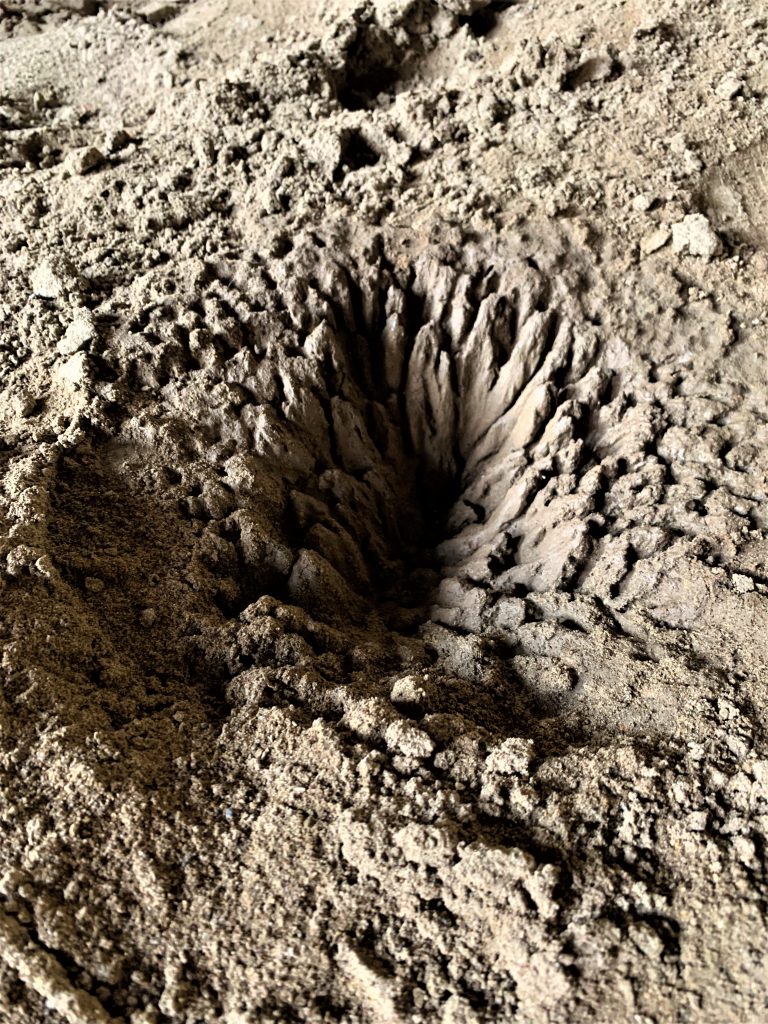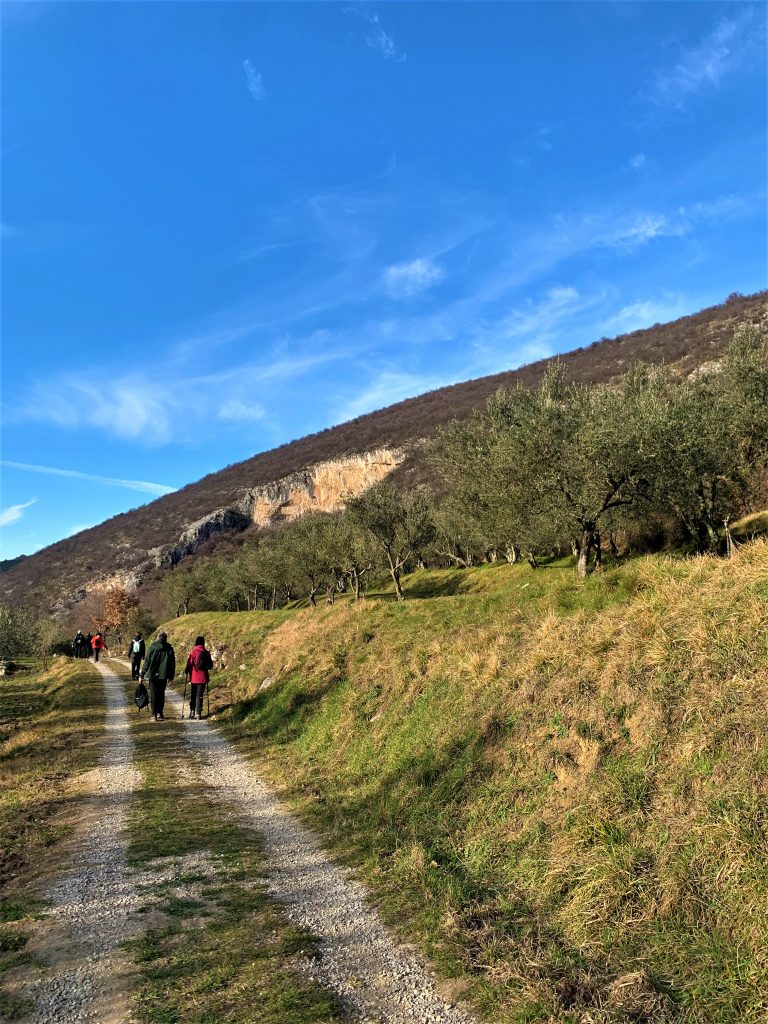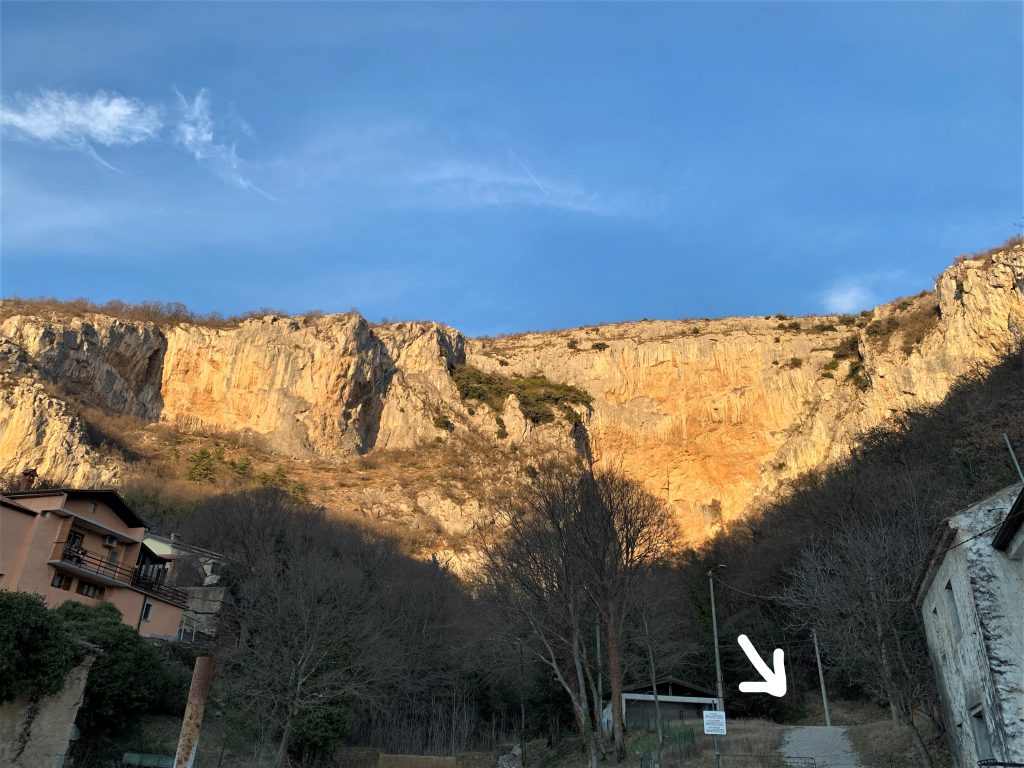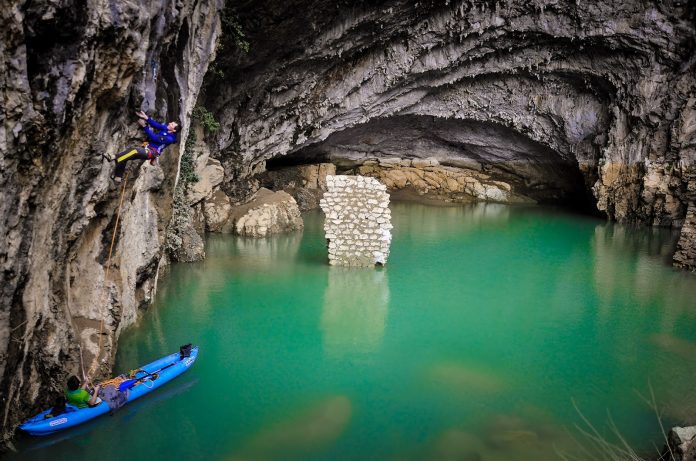Words and photography by Alessandra Ressa
Located above the old village of Osp across the Slovenian border, just minutes away from Muggia, the immense cave Osapska Jama is probably the most peculiar cavern in the whole Carso area.
Hidden away under a vast, steep, overhanging wall, for most of the year its floors are covered in fine, soft and incredibly white sand. In Spring, however, the abundant rains feed its underground stream Osp (the village was named after it), which eventually splashes out from its deep, dark tunnels with incredible violence, flooding the cave while flowing all the way to Muggia to terminate its seasonal journey in the Gulf of Trieste.
The sudden waters of the underground stream create an emerald lake and prevent access to the cave until the dry season. And if this wasn’t enough to make it a compelling destination, here is another curiosity. The cave used to be an impenetrable fortress where the local population hid behind high walls during the Turkish invasions.

The remains of those fortifications are still visible today. That is why the cave is also known by the Slovenian word for castle, Grad. Today, it is not only a favorite archeological and speleo destination, but it has become a special hangout for rock climbers coming from all over Europe.
The standing brick walls that we see at the cave’s entrance today are what remains of a highly sophisticated, fortified castle that was built between the 15th and 16th century. Not only did its impenetrable walls and position prevent the Turks, and later the Venetians of the Serenissima, from harming the population during their periodical attacks, but its intricate system of suspended floors and bridges protected the sieged from the unpredictable fury of the overflowing waters. Indeed, the waters themselves functioned as additional defense. The cave had already been used as shelter for its strategic position during prehistoric times, as archeological excavations revealed.

The Polynesian-like fine grained sand is carried out of the depths of the mountain by the underground river and deposited each year in the lake bed. When the lake dries, it becomes an unusual beach, with water dripping from the cave’s roof digging bizarre craters in the sand. Together with the white boulders surrounding the opening, the place resembles lunar landscapes.

The enormous cavern is unique in its geological features. It is the widest collapsed sinkhole of Slovenian Istria, and one of the largest in Europe. From a distance, it is possible to truly understand the vastness of the geological phenomenon that interested the whole area millions of years ago.
Because of its wide (45 meters!), bright opening, this cave enjoys the sunlight for most of the day, thus making it a favorite destination for hikers who don’t particularly enjoy the darkness of more traditional underground spots in Carso. It does not end there.

A locked gate of about a square meter prevents the untrained explorers from getting seriously hurt while it leads the experts into its depths, a series of long narrow tunnels and vertical drops that cover a distance of approximately 1.6 kilometers along the course of the river, with beautiful underground lakes and ponds. First explored in the late 1800s, the walls still preserve the names and clubs of those who entered its sub-surface more than one hundred years ago.
Because of its steep outer walls, partially accessible only to expert rock climbers, the area is also known for its wildlife and is a famous destination for birdwatching all year long. A protected species of wild pigeons and rare Bubo Bubo (eagle owl) can be seen nesting there.

You can reach the Osp cave by following the trail just off the main road in the village of Osp from Muggia Montedoro. The trail begins by the road, between a private house and the river. Do not be discouraged by a chain at its very start as it has been placed there to prevent cars from parking. The hike uphill is about 15 minutes long and not particularly hard, but you have to pay some attention to the tiny wooden bridges across the stream, which don’t appear to be too stable.
While in Osp, you should spend some time in the old village, made of traditional Carso stone houses, some over 400 years old. The whole area around it is an important archeological site. Excavations have discovered prehistoric remains, as well as a whole ancient Roman settlement, and later, a Medieval village. Just like today, olive oil and wine were produced there. Don’t miss the traditional St. Thomas Church, with its independent bell tower. The village is also known for its crystal clear natural spring Ribn’ca, which provided drinking water to the populations for centuries.





























